Mesin penekan tablet ialah peralatan pengeluaran penting untuk syarikat farmaseutikal, syarikat produk penjagaan kesihatan, industri kimia dan syarikat lain. Ia digunakan terutamanya untuk menekan serbuk atau bahan berbutir ke dalam tablet satu lapisan atau berbilang lapisan dengan saiz, bentuk dan berat yang seragam melalui mesin proses yang berbeza atau dies setem yang berbeza.Artikel ini memberikan gambaran keseluruhan terperinci tentang mesin penekan tablet, termasuk sejarah, jenis, prinsip kerja, komponen dan aplikasinya.
Proses pembuatan tablet melibatkan beberapa langkah kritikal untuk memastikan pengeluaran berkualiti tinggi. Pada mulanya, bahan farmaseutikal aktif (API) dan eksipien ditimbang dan dicampur dengan tepat. Campuran ini mengalami granulasi untuk meningkatkan kebolehliran dan kebolehmampatan, diikuti dengan pengeringan jika granulasi basah digunakan. Butiran kemudiannya bersaiz untuk keseragaman dan diadun dengan eksipien tambahan seperti pelincir dan disintegran. Langkah teras ialah pemampatan, di mana butiran yang dicampur dimasukkan ke dalam mesin penekan tablet dan dimampatkan ke dalam tablet di bawah daya terkawal untuk memastikan ketumpatan dan kekerasan seragam. Akhir sekali, tablet boleh disalut untuk penampilan, rasa dan kestabilan yang lebih baik sebelum dibungkus untuk melindunginya daripada faktor persekitaran dan memastikan jangka hayat.
Sejarah mesin penekan tablet bermula pada abad ke-19. Evolusi penekan tablet didorong oleh keperluan industri farmaseutikal untuk kecekapan pengeluaran tablet, ketekalan saiz tablet dan kestabilan kualiti, yang terus menambah baik dan menginovasi teknologi.
1. Permulaan Awal: Konsep pemampatan tablet bermula pada tahun 1800-an. Mesin penekan tablet manual pertama ialah peranti ringkas yang menggunakan satu penebuk untuk memampatkan serbuk ke dalam tablet. Mesin awal ini adalah intensif buruh dan mempunyai kapasiti pengeluaran yang terhad.

2. Pengenalan Rotary Tablet Press: Pada tahun 1872, sebuah syarikat farmaseutikal Amerika, membangunkan salah satu mesin penekan tablet berputar pertama. Inovasi ini menandakan kemajuan yang ketara dalam pembuatan tablet. Penekan tablet berputar dibenarkan untuk pengeluaran berterusan, meningkatkan pengeluaran dan kecekapan pengeluaran tablet dengan ketara.
3. Kemajuan Abad ke-20: Abad ke-20 menyaksikan banyak kemajuan dalam teknologi akhbar tablet. Pengenalan motor elektrik dan automasi meningkatkan lagi kecekapan dan ketepatan penekan tablet. Dalam tempoh ini, pelbagai jenis penekan tablet, termasuk penekan tebuk tunggal dan berbilang stesen, telah dibangunkan untuk memenuhi permintaan industri farmaseutikal yang semakin meningkat.
4. Era Moden: Dengan perkembangan sains dan teknologi pada era moden, Penekan Tablet Berkelajuan Tinggi teknologi juga telah mengalami perubahan revolusioner. Mereka telah berkembang daripada struktur mekanikal ringkas kepada kini dilengkapi dengan fungsi digital termaju, seperti paparan digital terkawal komputer bagi proses pengeluaran, sistem suapan automatik dan pemantauan status pengeluaran tekanan masa nyata. Kemajuan teknologi ini telah membolehkan pengeluar tablet meningkatkan lagi kecekapan pengeluaran mereka, memenuhi permintaan pasaran yang berkembang pesat, dan mengekalkan kualiti tablet yang dihasilkan.

Mengikut keperluan aplikasi dan skala pengeluaran yang berbeza, penekan tablet dibahagikan kepada jenis berikut:
1. Penekan tablet satu tebuk: Penekan tablet penebuk tunggal menggunakan satu penebuk dan satu penebuk untuk pembuatan tablet. Pukulan bergerak di antara acuan atas dan bawah untuk menekan serbuk atau butiran ke dalam tablet.
2. Penekan tablet berputar: Penekan tablet berputar terdiri daripada meja putar berputar dan berbilang penebuk. Apabila meja putar berputar, penebuk memasuki kawasan tablet secara bergilir-gilir untuk menekan serbuk atau butiran ke dalam tablet.
3. Penekan tablet berkelajuan tinggi: Penekan tablet berkelajuan tinggi ialah versi penekan tablet berputar yang dinaik taraf, direka untuk pengeluaran perindustrian ultra-tinggi. Sistem kawalan lanjutannya boleh memantau dan melaraskan parameter tablet dalam masa nyata untuk memastikan kualiti dan konsistensi setiap tablet.
4. Penekan tablet berbilang lapisan: Penekan tablet berbilang lapisan mampu memampatkan berbilang lapisan dalam tablet yang sama, setiap lapisan boleh mengandungi bahan aktif atau eksipien yang berbeza. Peralatan ini sesuai untuk pengeluaran tablet berfungsi yang memerlukan struktur berbilang lapisan, seperti tablet pelepasan berterusan, tablet pelepasan terkawal, dsb.
5. Penekan tablet tujuan khas: Penekan tablet tujuan khas ialah peranti yang direka untuk memenuhi keperluan pengeluaran tertentu, biasanya dengan modul dan reka bentuk berfungsi yang unik. Sebagai contoh, penekan tablet untuk pengeluaran tablet effervescent perlu dilengkapi dengan sistem kalis lembapan, manakala penekan tablet untuk penghasilan tablet berbentuk khas memerlukan acuan yang disesuaikan.
Mesin penekan tablet menukarkan serbuk atau bahan berbutir kepada tablet pepejal melalui satu siri langkah yang diselaraskan dengan baik. Berikut adalah bre terperinci perincian proses:
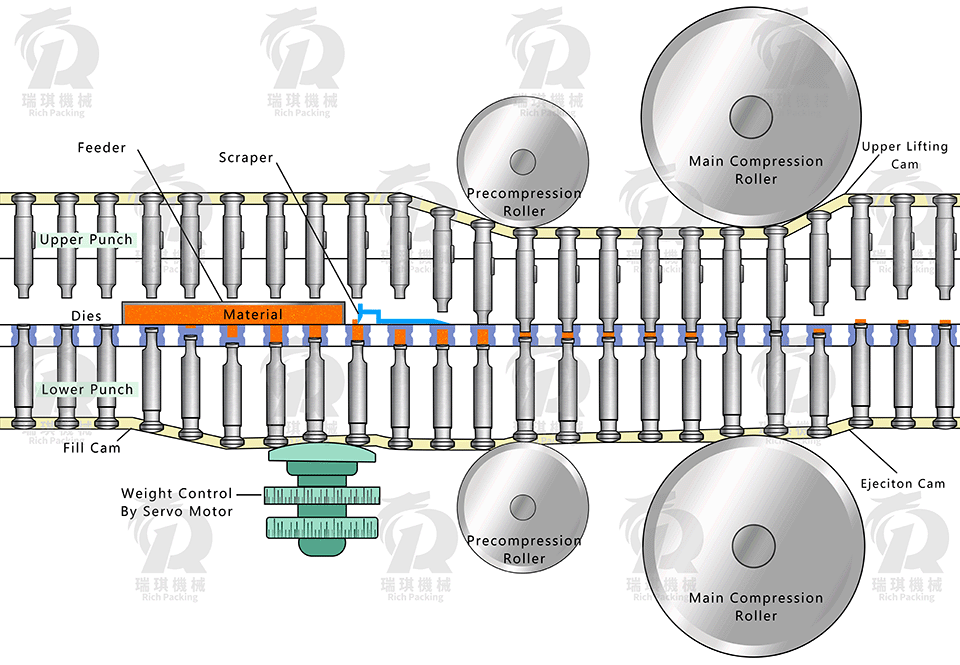
1. Pemakanan Bahan Mentah
Proses bermula dengan menghantar bahan mentah ke dalam rongga die mesin. Tugas ini biasanya dikendalikan oleh mekanisme penyuap yang direka untuk mengekalkan aliran bahan yang konsisten dan sekata. Untuk bahan yang mempunyai sifat melekit yang tinggi, penyuap paksa boleh digunakan untuk memudahkan penyusuan yang lancar.
2. Mengisi Rongga Die
Setelah bahan mentah diberi makan, mereka mengisi rongga die. Jumlah bahan yang diisi ke dalam rongga die dikawal oleh penebuk bawah, yang ditetapkan pada ketinggian tertentu untuk membolehkan isipadu bahan yang dikehendaki masuk. Pengisian yang tepat adalah penting untuk memastikan berat dan konsistensi tablet yang seragam.
3. Mampatan
Peringkat mampatan melibatkan dua pukulan: pukulan atas dan pukulan bawah. Begini cara ia berfungsi:
Punch Atas: Roda tekanan pukulan atas ditekan ke bawah ke dalam rongga acuan tengah, dan bekerjasama dengan pukulan bawah untuk mengeluarkan dan membentuk bahan serbuk.
Penebuk Bawah: Penebuk bawah menyokong bahan dari bawah dan mungkin juga bergerak ke atas sedikit untuk membantu dalam pemampatan.
Tekanan yang dikenakan oleh tumbukan memadatkan serbuk atau butiran menjadi tablet padat dan padat. Jumlah tekanan dikawal dengan teliti untuk memastikan tablet tidak terlalu keras atau terlalu lembut.
4. Ejection
Selepas penebuk tablet selesai, penebuk atas dan penebuk bawah kembali ke kedudukannya mengikut trek, dan penebuk bawah menolak tablet yang terbentuk keluar dari rongga cetakan ke port pelepasan melalui trek bawah.Langkah ini mesti lancar untuk mengelakkan sebarang kerosakan pada tablet.
5. Ulang Kitaran
Mesin penekan tablet beroperasi dalam kitaran berterusan, mengulangi langkah penyusuan, pengisian, pemampatan dan lontar. Ini membolehkan pengeluaran tablet berkelajuan tinggi. Mesin canggih boleh menghasilkan beribu-ribu tablet seminit, mengekalkan kualiti dan keseragaman yang konsisten.
6. Kawalan Kualiti
Penekan tablet generasi terkini dilengkapi dengan pelbagai sensor digital dan sistem kawalan analitik yang boleh memantau pelbagai parameter seperti tekanan die, ketebalan tablet, dan berat bahan serbuk pengisi dalam masa nyata. Melalui kawalan digital yang sistematik, ia memastikan pengeluaran setiap tablet memenuhi spesifikasi yang ditetapkan dan menjamin kualiti dan kecekapan pengeluaran.
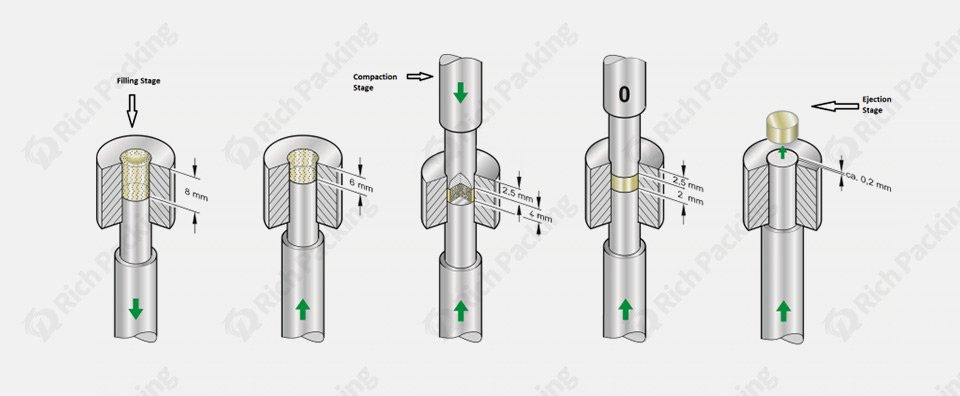
Komponen utama mesin penekan tablet termasuk corong, sistem penyuap, rongga die, pukulan atas dan bawah, trek sesondol, turet, mekanisme lenting dan sistem kawalan. Setiap komponen memainkan peranan penting dalam memastikan pengeluaran tablet berkualiti tinggi yang cekap dan konsisten. Memahami komponen ini dan fungsinya adalah penting untuk mengoptimumkan proses pembuatan tablet:
1. Hopper
Corong ialah titik permulaan mesin penekan tablet. Ia memegang serbuk mentah atau butiran dan memasukkannya ke dalam mesin. Corong direka bentuk untuk memastikan aliran bahan yang konsisten dan terkawal ke dalam sistem penyuap, mencegah sekatan dan memastikan keseragaman dalam pengeluaran tablet.
2. Sistem Pengumpan
Sistem penyuap memindahkan bahan dari corong ke rongga die. Ia biasanya terdiri daripada dayung atau mekanisme berputar yang mengagihkan bahan secara sama rata ke dalam acuan. Sistem penyuap memastikan bahawa setiap rongga die menerima jumlah bahan yang betul, yang penting untuk menghasilkan tablet dengan berat dan ketumpatan seragam.
3. Rongga Mati
Rongga die ialah ruang berongga dalam jadual die tempat pembentukan tablet berlaku. Saiz dan bentuk rongga die menentukan saiz dan bentuk tablet akhir. Pengisian yang tepat pada rongga cetakan adalah penting untuk mengekalkan keseragaman dan kualiti tablet.
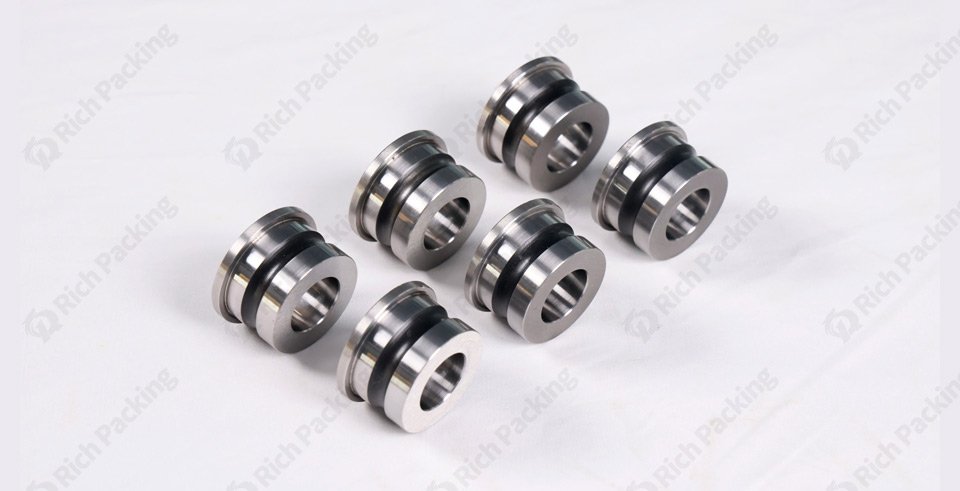
4. Pukulan Atas dan Bawah
Penebuk adalah komponen utama yang bertanggungjawab untuk memampatkan bahan menjadi tablet. Terdapat dua pukulan dalam mesin penekan tablet:
Pukulan Atas: Turun ke dalam rongga acuan untuk memberikan tekanan pada bahan.
Pukulan Bawah: Menyokong bahan dari bawah dan mungkin juga bergerak sedikit untuk membantu dalam proses pemampatan.
Penebuk mesti diselaraskan dan dikekalkan dengan tepat untuk memastikan kualiti tablet yang konsisten dan mengelakkan kehausan mesin.
5. Trek Cam
Trek cam memandu pergerakan pukulan atas dan bawah. Mereka mengawal gerakan menegak pukulan, memastikan ia bergerak dengan cara yang disegerakkan. Trek sesondol direka bentuk untuk memberikan jumlah tekanan dan masa yang betul untuk setiap peringkat proses pembentukan tablet.

6. Turret atau Meja Putar
Turret, atau meja putar, memuatkan beberapa set dadu dan tumbukan. Ia berputar untuk membawa setiap rongga dadu dan tumbukan yang sepadan ke dalam kedudukan untuk mengisi, mampatan dan lontar. Putaran berterusan turet membolehkan pengeluaran tablet berkelajuan tinggi.
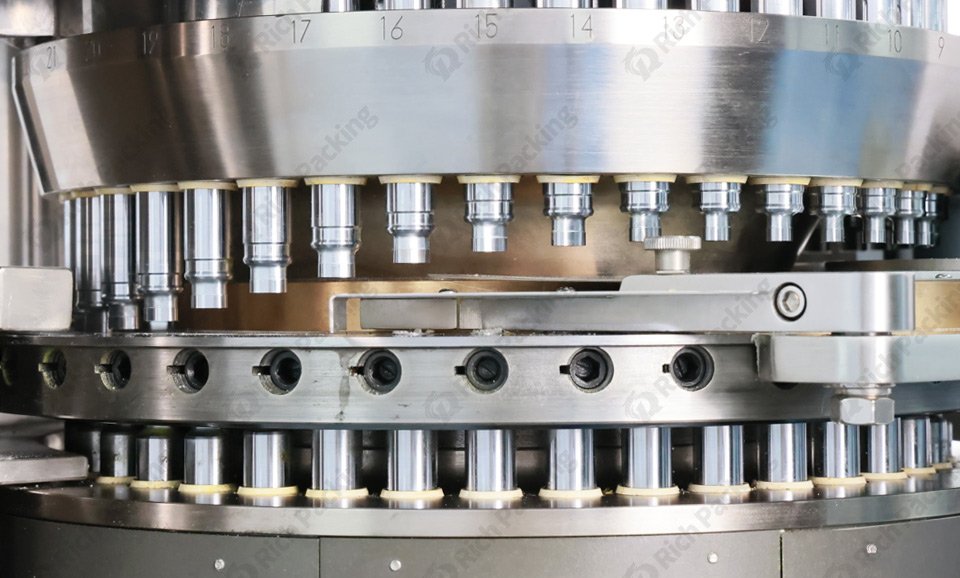
7. Mekanisme Ejection
Mekanisme ejection bertanggungjawab untuk mengeluarkan tablet yang terbentuk dari rongga die. Selepas mampatan, pukulan atas ditarik balik, dan pukulan bawah naik untuk menolak tablet keluar dari acuan. Tablet yang dikeluarkan kemudiannya diarahkan ke pelongsor pelepasan, di mana ia dikumpulkan untuk pemprosesan atau pembungkusan selanjutnya.
8. Sistem Kawalan
Mesin penekan tablet moden dilengkapi dengan sistem kawalan lanjutan yang memantau dan melaraskan pelbagai parameter seperti daya mampatan, ketebalan tablet dan kelajuan pengeluaran. Sistem ini memastikan setiap tablet memenuhi spesifikasi dan standard kualiti yang diperlukan. Mereka juga menyediakan data masa nyata dan maklum balas, membolehkan pengendali membuat pelarasan yang diperlukan dengan cepat.
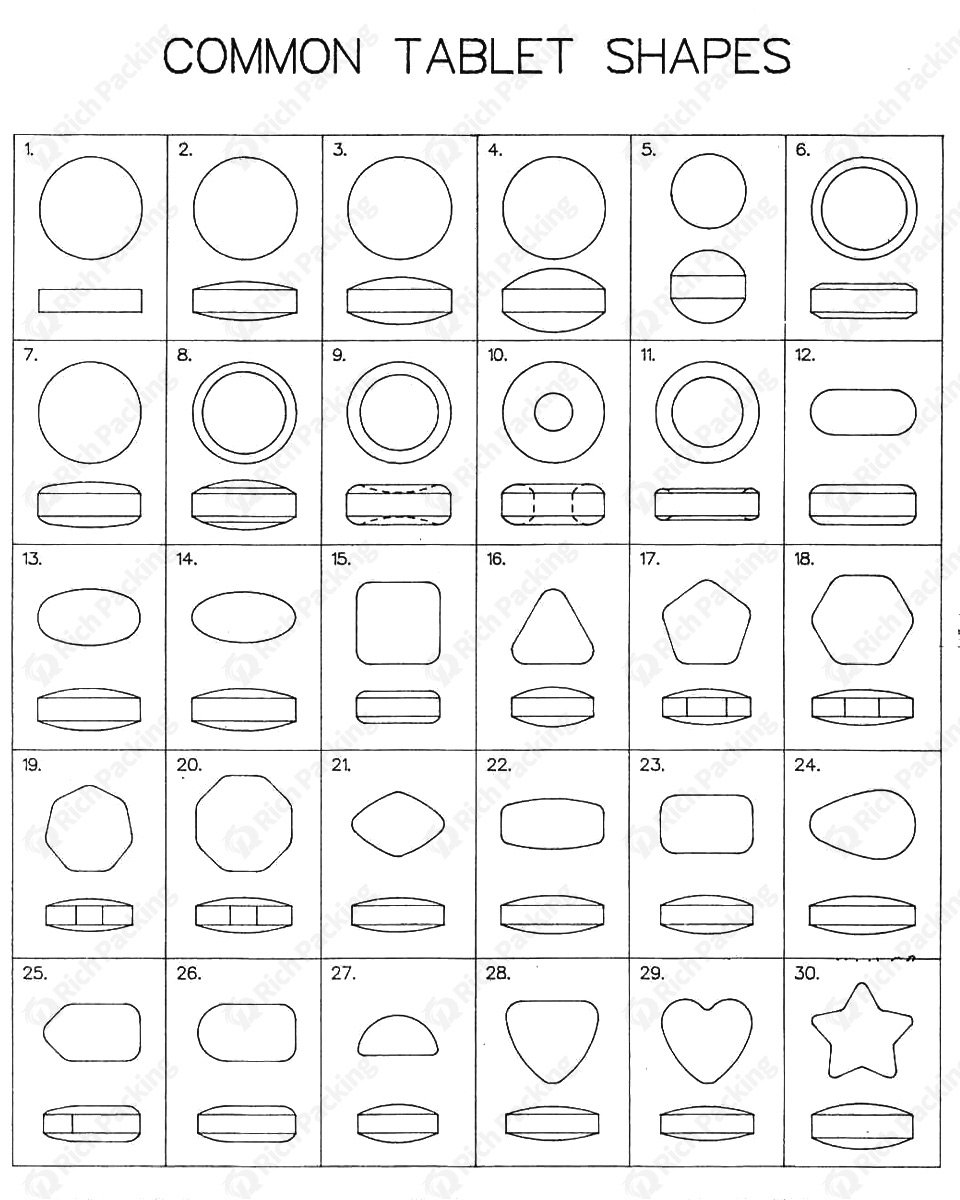
Mesin penekan tablet digunakan dalam pelbagai industri untuk aplikasi yang berbeza:
1. Industri Farmaseutikal: Penekan tablet digunakan terutamanya untuk menghasilkan tablet ubat, termasuk vitamin, antibiotik, dan penghilang rasa sakit. Mereka memastikan dos yang tepat dan kualiti yang konsisten, yang penting untuk keselamatan dan keberkesanan pesakit.
2. Industri Nutraseutikal: Syarikat nutraseutikal menggunakan penekan tablet untuk mengeluarkan makanan tambahan, seperti multivitamin, mineral dan ekstrak herba. Tablet ini direka bentuk untuk memberikan manfaat kesihatan dan sering dipasarkan sebagai produk di kaunter.
3. Industri Makanan: Dalam industri makanan, penekan tablet digunakan untuk menghasilkan produk makanan yang dimampatkan, seperti tablet effervescent, kiub bouillon, dan barangan konfeksi. Produk ini direka untuk kemudahan dan kemudahan penggunaan.
4. Industri Kimia: Penekan tablet digunakan untuk menghasilkan pelbagai tablet kimia, termasuk agen pembersih, baja dan racun perosak. Tablet ini direka untuk pelepasan terkawal dan aplikasi yang tepat.
5. Industri Kosmetik: Dalam industri kosmetik, penekan tablet digunakan untuk menghasilkan bedak padat, pemerah pipi dan produk solek ditekan yang lain. Produk ini direka bentuk untuk memudahkan penggunaan dan mudah alih.
Mesin penekan tablet ialah peralatan penting dalam industri farmaseutikal, nutraseutikal, makanan, kimia dan kosmetik. Mereka telah berkembang dengan ketara selama bertahun-tahun, daripada penekan manual ringkas kepada mesin automatik yang canggih yang mampu menghasilkan pengeluaran berskala besar berkelajuan tinggi. Dengan kemajuan dalam teknologi, mesin penekan tablet terus bertambah baik dari segi kecekapan, ketepatan dan serba boleh, memenuhi keperluan pelbagai industri. Memandangkan permintaan untuk tablet berkualiti tinggi terus berkembang, mesin penekan tablet akan kekal di barisan hadapan dalam pembuatan tablet, memacu inovasi dan kecemerlangan dalam proses pengeluaran.
Kami adalah pengeluar yang telah lama membekalkan jentera farmaseutikal dan pembungkusan kepada syarikat Fortune 500. Jika anda mempunyai keperluan untuk membeli Mesin Penekan Tablet, sila hubungi kami .